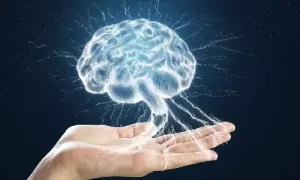
Dr. Sahil Kohli, Consultant – Neurology, Narayana Superspeciality Hospital, Gurugram
Each year stroke kills twice as many women as breast cancer. One in five women will have stroke in their life time. Nearly 60% of stroke deaths are in women. Stroke is the third leading cause of death for women and 5th for men. Yet most women do not know their high risk of having a stroke. Those these stats are alarming but the good news is that 80% of strokes are preventable, So its pertinent that women understand what a stroke looks like, whether they are at risk for one, and what to do if they or someone they know is having one.
WHAT IS STROKE?
Stroke or Brain attack happens when blood flow to the part of the brain is cut off and the brain cells die due to lack of oxygen. Stroke is always a medical emergency as delay in treatment can mean permanent brain damage.
RISK FACTORS FOR STROKE:
The traditional risk factors of stroke in women are similar to their male counterparts namely Hypertension, Diabetes, advancing age, Atrial fibrillation, smoking, high cholesterol, cardiac disease. Women have additional risks of stroke in these three stages of their life
1. In child bearing age: Use of Oral contraceptives (OCP ) The risk is greatest for women with additional risk factors, such as advanced age, along with cigarette smoking, high blood pressure or diabetes. In pregnancy there is nine fold higher risk at the time of delivery three fold in period immediately after delivery. Pregnancy is considered a high risk time because of hypercoagulability seen in pregnant ladies. Pregnancy also can lead to a predisposition to bleeding strokes, where either a brain aneurysm bursts or a weakened blood vessel begins leaking. In women who have high Blood pressure should be monitored carefully during pregnancy and treated adequately with safe medications. Pre-eclampsia is state when blood pressure rises in pregnancy and doubles the risk of stroke. Third type of strokes which are called Venous strokes are also common in the peripartum period which if timely treated can have good long term prognosis. Women Suffering from migraine headaches with aura. Migraines with aura can increase a woman’s stroke risk two and a half times and most people who suffer migraines are women. Risk is highest in women with migrane with aura who continue to smoke or use OCP or both.
2 .Menuapuse: Menupause poses a 30 % more risk in women on HRT( Hormonal replacement therapy). The newer formulations, with lower doses of estrogen and progestin, are much safer and should be taken under supervision.
3. AGE more than 80: women aged more than 80 years have limited access to care , less likely to receive anteplatelets, anti hypertensive and anticoagulation for AF thus predisposing them to stroke.
WARNING SIGNS/HOW TO IDENTIFY STROKES: stroke can easily be identified by a Powerful four letter word FAST if understand carefully which means
Sudden onset
F face drooping on one side
A arm weakness of one side
S speech slurring or understanding
Time i.e, reach stroke ready hospital within 4.5 hours of symptoms onset where 24×7 CT scan facility is available. Time is perhaps the most important of the four elements, as the most effective stroke treatment (a drug known as IV TPA, or Alteplase) really only works if administered within four and half hours of the stroke itself.
Women may report symptoms that are different from the common symptoms. They can include sudden onset:
- Loss of consciousness or fainting
- General weakness
- Difficulty or shortness of breath
- Confusion, unresponsiveness or disorientation
- Sudden behavioral change
- Agitation
- Hallucination
- Nausea or vomiting
- Pain
- Seizures
- Hiccups
Majority of strokes in women and in
general are preventable however if Stroke happens it is treatable if identified
correctly and should be viewed as a treatable emergency. There is a general
tendency more likely in women that they think it may become better with a nap
or massage or they wait till morning to reach a hospital which is strongly
discouraged.






